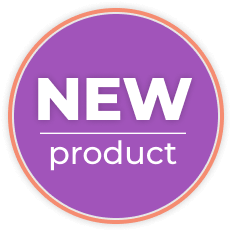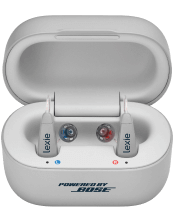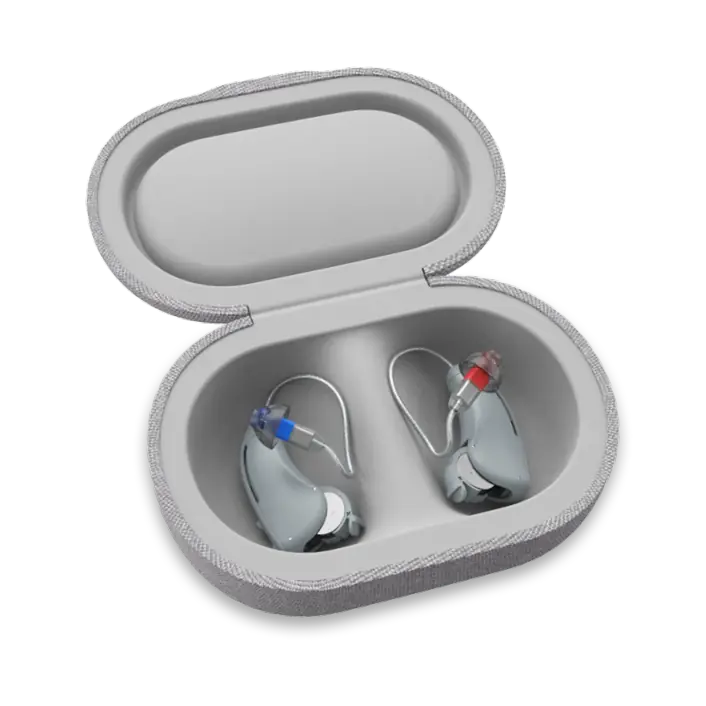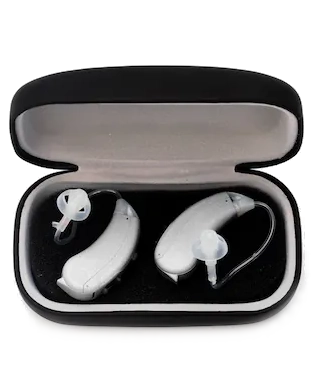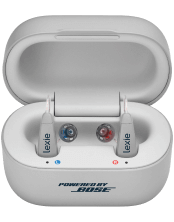Using Hearing Aids on a Video Call
The world is changing. Zoom meetings are more common than in-person meetings, video calls take the place of visits with friends and house party apps where you can host a group of friends online are replacing real house parties. How do we navigate this changing world and use hearing aids on a video call?
The good news is that it may be a lot easier for people with hearing loss to understand speech on a video call than on a normal phone call. As people with hearing loss use a lot of visual cues to help them communicate, such as lip reading and body language, having this visual information available greatly improves the chances of understanding. A recent study by The Hearing Review shows that for people with a profound hearing loss, understanding speech over the phone improved by 23% when they had visual cues as well as audio-only cues.
Tips to make your video call experience more successful while using hearing aids:
Good internet connection
When on a video call, it is firstly very important to make sure you have a good internet connection. A lag between video and sound can be a nightmare when you have a hearing impairment, as the hearing impaired often rely on lip-reading to communicate. Make sure the video is of good quality.
Tell people you have hearing loss
Inform the people you are conversing with that you have hearing loss beforehand. Ask them to modify their environment so that they are seated with their face in good lighting. Keep the background plain without too many distractions- i.e. don’t sit in front of the television. Always make sure background noise is kept to a minimum. If one person has a child crying in the background or a dog barking, ask them to mute their microphone. These distractions may make it more difficult to hear the rest of the speakers.
Caption the call
Captioning a video can be a lifesaver for someone with hearing loss. Zoom supports live captioning during video calling. This can be done by typing the captions as you go or using third-party captioning software for automated captioning. At the moment, this is only available for certain universities as a paid service, but Zoom might make this feature available for the general public in the near future.
Use speech to text apps
Speech to text apps can also be very useful. Examples of these include Google live transcribe, Speechy, or Ava. Zoom also has a feature where it uses automatic speech recognition to transcribe videos saved in the cloud. The quality of the text in these transcriptions may not always be great, but at least it does provide someone with a hearing impairment with context regarding what the call is about.
Go ‘old school’ if necessary
If all else fails, old fashioned pen and paper can also work. A whiteboard with a marker can be kept on hand to explain difficult concepts.
Directionality
Most hearing aids (except very small custom hearing aids) have two microphones built-in. If you have two hearing aids, they will communicate with each other to identify where a noise source is coming from as well as where the speech signal is coming from. The microphones will then form patterns to facilitate the best speech understanding. For example, if the speech signal is coming from the left and the noise is coming from the front, your hearing aids will focus towards the left in order to improve speech understanding. This is called adaptive directionality. Most hearing aids will have this feature, depending on the technology level of the hearing aid you purchased.
The hearing aid may also be set to omnidirectional or directional. Omnidirectional means that all the microphones of your hearing aid are on and the hearing aid is picking up sound from right around you. Directional means that the back microphone is usually switched off and the hearing aid is only focusing on information coming from the front.
These features in a hearing aid can be great for speech understanding in your day-to day-life. Having your hearing aid set to adaptive directionality or an omnidirectional mode can be slightly problematic when on a video call. If someone speaks behind you, for example, the hearing aid may focus on that instead of the video call.
Ask your hearing health provider to add a directional program to your hearing aid. You may however already have this on your hearing aid- it may be called a speech in noise program. In this program, the noise reduction features in your hearing aid might also be set to maximum, which will further help you to understand speech better during a video call. You can change the program on your hearing aid either through an app on your phone, or a push-button located at the back of your hearing aid.
Using technology
Hearing aids have entered a new age of connectivity. Most modern hearing aids are able to seamlessly connect to your electronic devices and stream high-quality sound to your hearing aids. This usually works the best if sound can be streamed to both hearing aids, providing the user with stereo sound.
There are several ways you can stream a phone call to your hearing aids:
- Direct streaming via 2.4 GHz (Made for iPhone hearing aids): There are several hearing aid models in the market that can connect directly to an Apple or Android device. Ask your hearing health provider if your hearing aid can do this. She can help you connect your hearing aid to your phone or provide you with instructions on how to do it yourself.
- Bluetooth streaming: Some hearing aids can connect via Bluetooth to your phone/computer/tablet. You can then stream the phone call directly to your hearing aids.
- Streaming via a Bluetooth device: If your hearing aid is not capable of streaming sound directly, you may purchase an additional Bluetooth device. This device can connect to your phone/computer/tablet and you can stream your phone call directly to your hearing aids.
Consult your hearing health provider or Lexie hearing expert to find out which of the above-mentioned strategies is possible when using your hearing aids.
